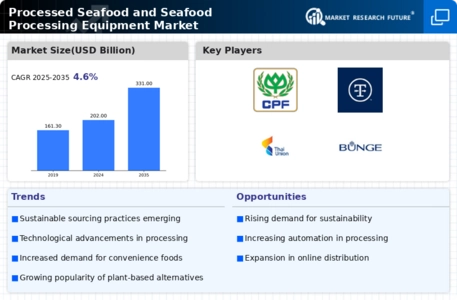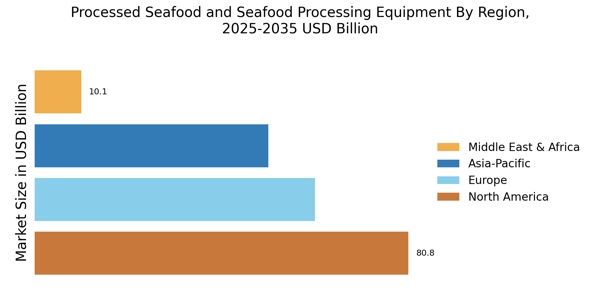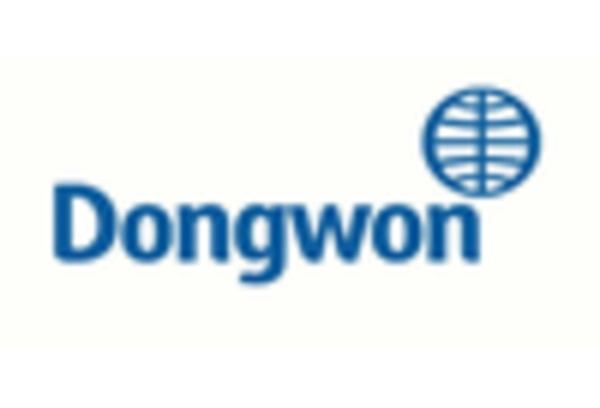Rising Demand for Convenience Foods
The increasing consumer preference for convenience foods is a notable driver in the Processed Seafood and Seafood Processing Equipment Market. Busy lifestyles and the need for quick meal solutions have led to a surge in demand for ready-to-eat and easy-to-prepare seafood products. According to recent data, the processed seafood segment is projected to grow at a compound annual growth rate of approximately 5.5% over the next few years. This trend is compelling manufacturers to innovate and enhance their processing equipment to meet the evolving needs of consumers. As a result, the market for seafood processing equipment is likely to expand, driven by the necessity for efficiency and speed in production processes.
Expansion of E-commerce and Online Retail
The expansion of e-commerce and online retail platforms is reshaping the landscape of the Processed Seafood and Seafood Processing Equipment Market. As consumers increasingly turn to online shopping for their food needs, seafood companies are adapting by enhancing their online presence and distribution channels. This shift is expected to drive the demand for processed seafood products, as consumers seek the convenience of home delivery. Market analysis suggests that the online seafood market is projected to grow significantly, prompting seafood processors to invest in advanced processing equipment that can meet the demands of e-commerce logistics and packaging requirements.
Growing Awareness of Nutritional Benefits
The rising awareness of the nutritional benefits associated with seafood consumption is significantly influencing the Processed Seafood and Seafood Processing Equipment Market. Seafood is recognized for its high protein content, omega-3 fatty acids, and essential vitamins, which are increasingly being highlighted in health campaigns. This awareness is driving consumers towards processed seafood options that retain these nutritional benefits. Market data indicates that the demand for processed seafood is expected to rise, with a notable increase in products that emphasize health benefits. Consequently, seafood processing equipment manufacturers are likely to focus on technologies that preserve the nutritional integrity of seafood during processing.
Innovations in Seafood Processing Technology
Innovations in seafood processing technology are a critical driver in the Processed Seafood and Seafood Processing Equipment Market. Advances such as automation, artificial intelligence, and improved preservation techniques are enhancing the efficiency and quality of seafood processing. These technological advancements not only streamline production but also reduce waste and improve product shelf life. Recent studies indicate that the adoption of such technologies can lead to a reduction in processing costs by up to 20%. As a result, seafood processors are increasingly investing in state-of-the-art equipment to remain competitive and meet consumer expectations for quality and sustainability.
Increasing Regulatory Standards and Food Safety Concerns
Increasing regulatory standards and heightened food safety concerns are shaping the Processed Seafood and Seafood Processing Equipment Market. Governments and regulatory bodies are implementing stricter guidelines to ensure the safety and quality of seafood products. This trend is compelling seafood processors to invest in advanced processing equipment that complies with these regulations. Market data suggests that the demand for equipment designed to enhance food safety, such as traceability systems and quality control technologies, is on the rise. Consequently, seafood processing companies are likely to prioritize investments in equipment that not only meets regulatory requirements but also assures consumers of product safety.


















Leave a Comment